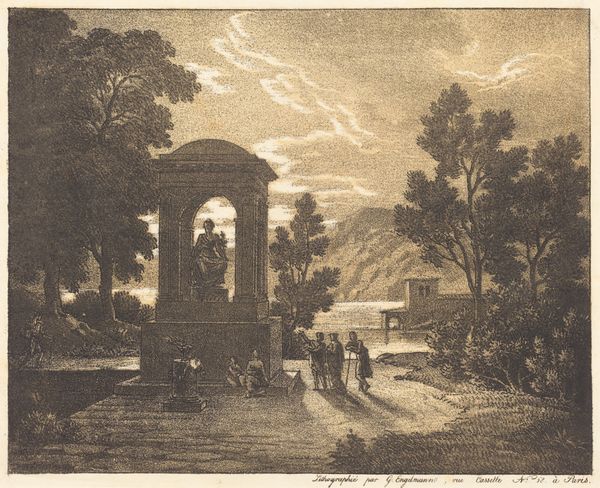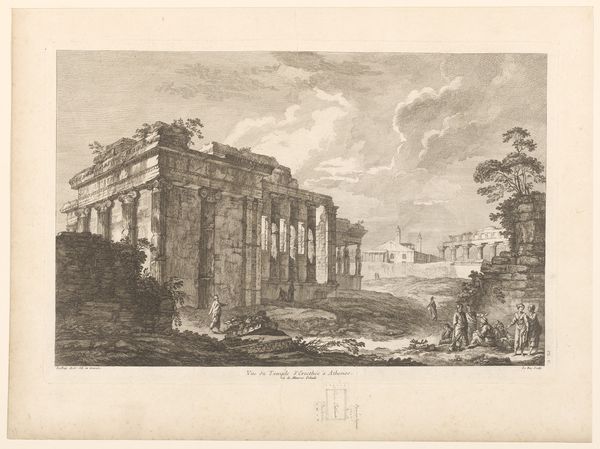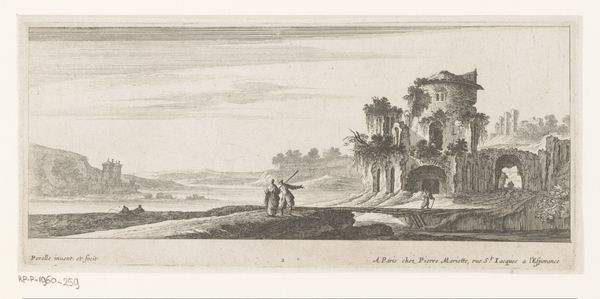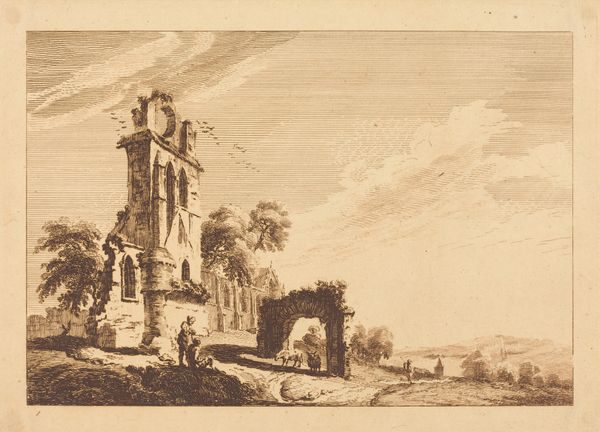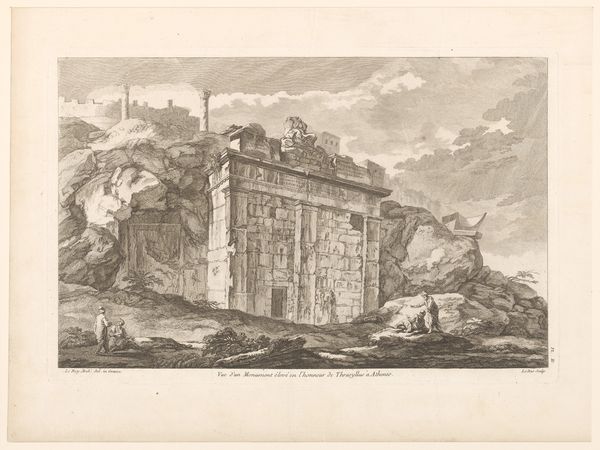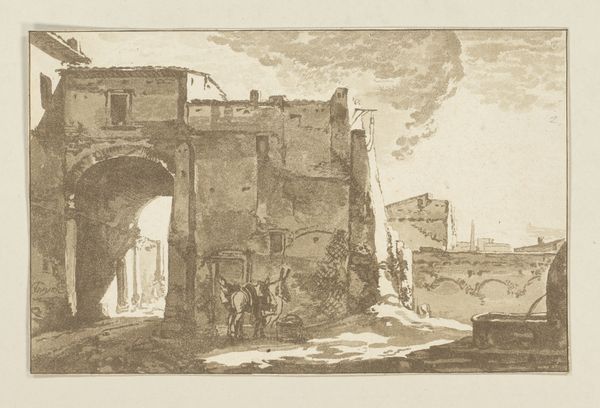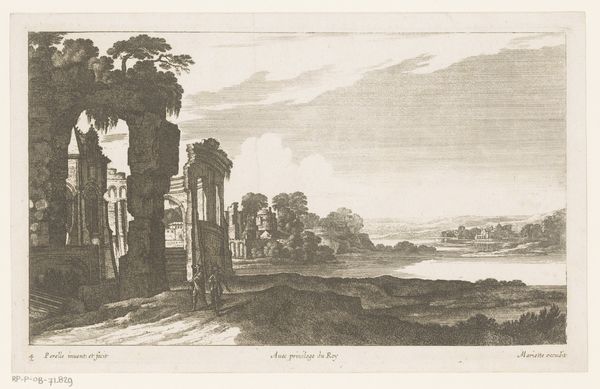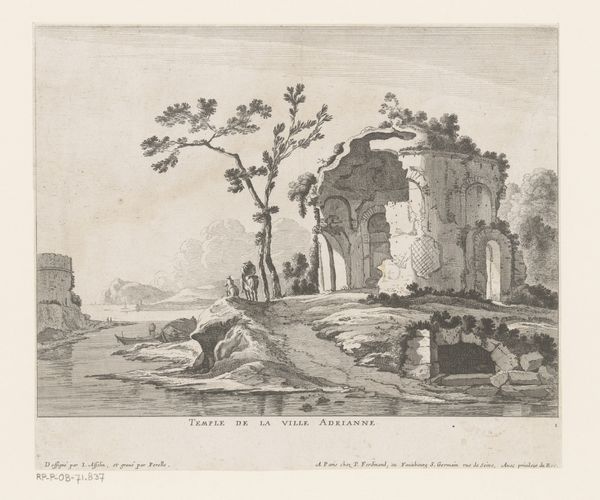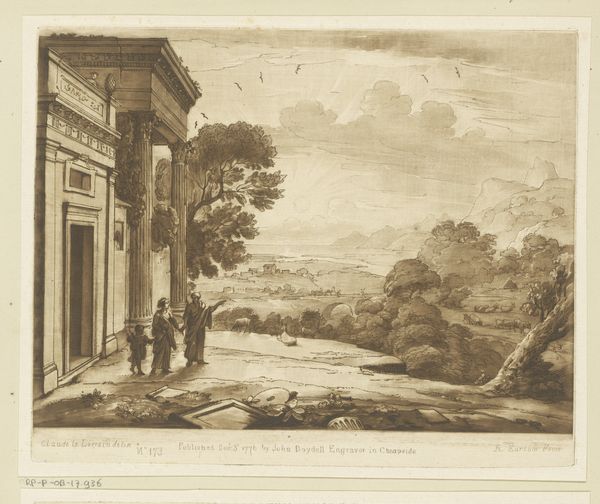
drawing, pencil, architecture
#
drawing
#
pencil sketch
#
landscape
#
romanticism
#
pencil
#
architecture drawing
#
watercolour illustration
#
history-painting
#
architecture
Dimensions: height 130 mm, width 205 mm
Copyright: Rijks Museum: Open Domain
Curator: Today, we're looking at "Tempelruïnes aan een meer in een Italiaans landschap," or Temple Ruins by a Lake in an Italian Landscape, an intriguing work rendered between 1803 and 1867. It’s attributed to Clarkson Stanfield and appears to be executed in pencil. Editor: My immediate reaction is to the muted tones – almost monochromatic. It creates a somber, reflective atmosphere, despite the presence of figures and architecture. There's something quite haunting about it, like a memory fading at the edges. Curator: It's a lovely example of how Stanfield blends architecture and landscape into what we could consider a history painting. Given the time frame, let's consider what drove such subjects, the means of artistic production, and Stanfield’s position within that system. This aesthetic speaks volumes about the industrial age and the nostalgia associated with classical romanticism. Editor: Absolutely, and the ruins themselves are rich with social commentary. These fragments tell a narrative about cultural decline and the passage of time – quite common in art expressing British imperialism, and its reach on nations all over the world. It begs the question, whose perspective of 'ruin' is shown? It speaks volumes about cultural impact, appropriation and shifts in power at the time of this painting's release. The fact that it's a sketch makes it feel as though he might not have fully planned or resolved those thoughts. Curator: Indeed, it’s a sketch, not a finished painting. What this enables is a rawness, allowing access to the labor and processes inherent in producing this scene; observe how Stanfield contrasts different line weights. This highlights his awareness of materials to render the depth of this picture, as well as a starker image quality, a commodity consumed in Victorian society. Editor: The figures present are quite interesting. They appear diminutive against the grand architecture – a clear artistic choice about human vulnerability and, to your point, that concept of labor. They are there as laborers almost. Are they spectators or participants? Their clothes seem like standard servant uniforms of the era and place in time, making us consider a certain sense of gender too, because that costume confines women in a more pronounced way than the man rowing the boat. Curator: Interesting angle! Now, reflecting on these combined observations – from the physical making to its historical contexts – gives us a more textured appreciation. Editor: Yes, thinking about the broader socio-political factors intertwined with Stanfield’s hand sketches and shapes within that picture deepens our comprehension and relation to its original intention.
Comments
No comments
Be the first to comment and join the conversation on the ultimate creative platform.

